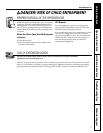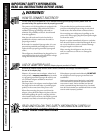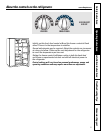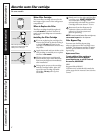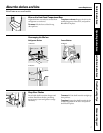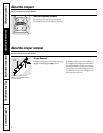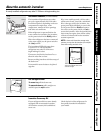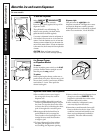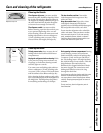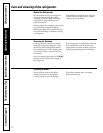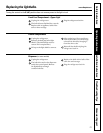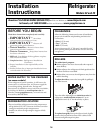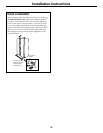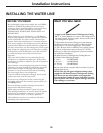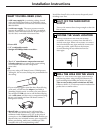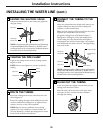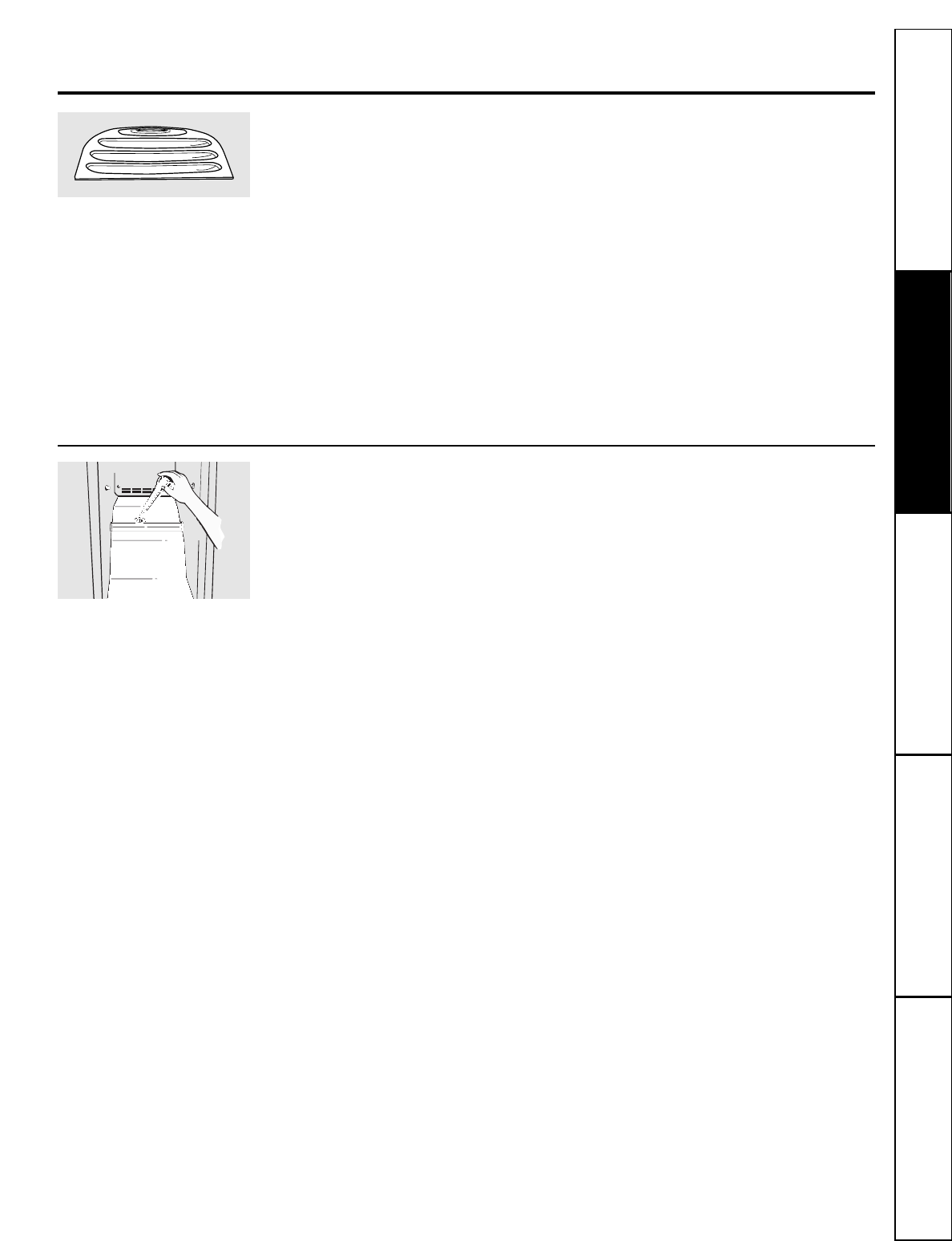
Consumer SupportTroubleshooting Tips
Operating InstructionsSafety Instructions
Installation Instructions
Care and cleaning of the refrigerator.
www.Hotpoint.com
Cleaning the Outside
The dispenser drip area,
(on some models)
beneath the grille, should be wiped dry. Water
left in this area may leave deposits. Remove
the deposits by adding undiluted vinegar to
the well. Soak until the deposits disappear
or become loose enough to rinse away.
The dispenser cradle
(on some models).
Before cleaning, open the freezer door part
way to prevent dispensing of ice or water
when cleaning. Clean with warm water and
baking soda solution—about a tablespoon
(15 ml) of baking soda to a quart (1 liter)
of water. Rinse thoroughly and wipe dry.
The door handles and trim.
Clean with a
cloth dampened with soapy water. Dry
with a soft cloth.
Keep the outside clean.
Wipe with a clean
cloth lightly dampened with kitchen
appliance wax or mild liquid dish detergent.
Dry and polish with a clean, soft cloth.
Do not wipe the refrigerator with a soiled dish
cloth or wet towel. These may leave a residue
that can erode the paint. Do not use scouring
pads, powdered cleaners, bleach or cleaners
containing bleach because these products can
scratch and weaken the paint finish.
Cleaning the Inside
To help prevent odors,
leave an open box of
baking soda in the fresh food and freezer
compartments.
Unplug the refrigerator before cleaning.
If this
is not practical, wring excess moisture out
of sponge or cloth when cleaning around
switches, lights or controls.
Use warm water and baking soda solution—
about a tablespoon (15 ml) of baking soda
to a quart (1 liter) of water. This both cleans
and neutralizes odors. Rinse and wipe dry.
After cleaning the door gaskets, apply a thin
layer of petroleum jelly to the door gaskets at
the hinge side. This helps keep the gaskets
from sticking and bending out of shape.
Drain opening in freezer compartment.
During
yearly cleaning, remove bottom freezer
basket and flush a solution of baking soda—
1 teaspoon (5 ml) and 2 cups (500 ml) of
hot (not boiling) water—through the drain
line with the help of a meat baster. This will
help eliminate odor and reduce the
likelihood of a clogged drain line. If drain
becomes clogged, use a meat baster and
baking soda solution to force the clog
through the drain line.
Avoid cleaning cold glass shelves with hot water
because the extreme temperature difference
may cause them to break. Handle glass shelves
carefully. Bumping tempered glass can cause it
to shatter.
Do not wash any plastic refrigerator parts in
the dishwasher.
11
Dispenser drip area.



